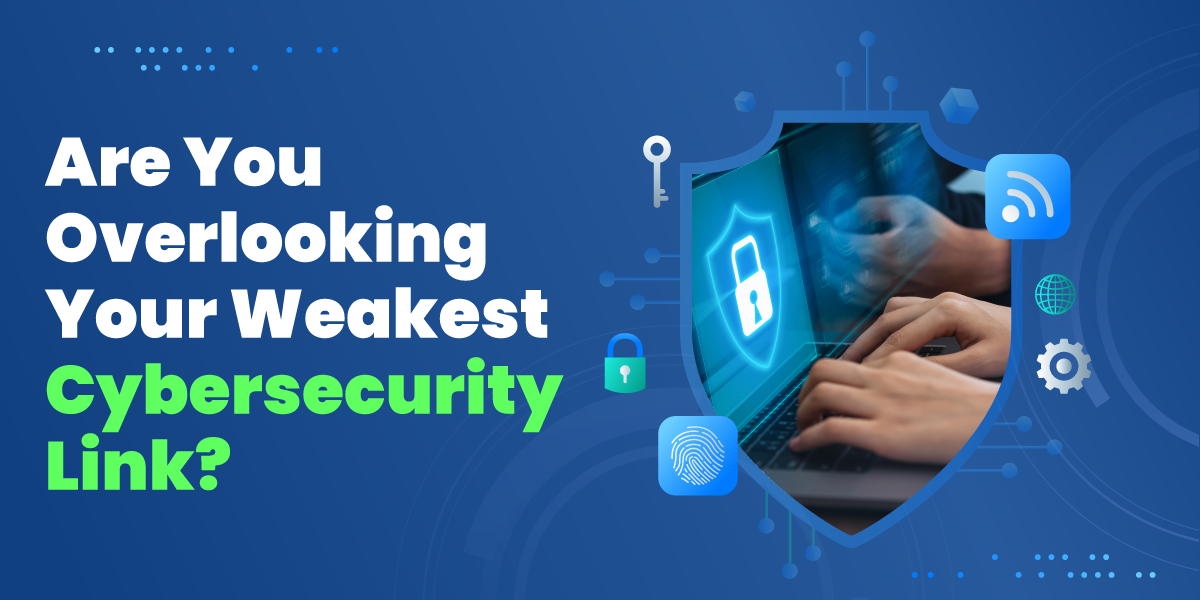Cyber Protection Starts with Your Workforce
In today’s digital age, cybersecurity threats are becoming increasingly sophisticated and pervasive. Therefore, it is crucial for organizations to ensure that their workforce is trained and equipped with the required skills to prevent and respond to cybersecurity incidents. In this blog post, we will explore the importance of cybersecurity training for the workforce and how it can help organizations to protect against cyber threats.
The Importance of Cybersecurity Training:
Cybersecurity training is critical for the workforce, as it helps to raise awareness of the significance of cybersecurity and the risks associated with cyber threats. It also provides employees with the necessary skills and knowledge to identify and prevent security incidents. Cybersecurity training can cover a range of topics, including password management, phishing, malware, and social engineering.
In addition to enriching the skills of the workforce, cybersecurity training can also help to improve the overall cybersecurity posture of the organization. When employees are trained to identify and report security incidents, organizations can respond quickly and effectively to cyber threats. This can help to lower the impact of cyber incidents and reduce the risk of data breaches and other security incidents.
Cybersecurity Training Best Practices:
To ensure that cybersecurity training is effective, organizations should follow best practices, including:
- Providing Regular Training: Given the ever-evolving nature of cybersecurity threats, it is crucial to provide regular and ongoing cybersecurity training to the workforce. This ensures that employees stay informed about the latest trends, threats, and best practices in cybersecurity. By keeping employees up-to-date, organizations can enhance their overall security posture and lower the risk of successful attacks.
- Customizing Training: Every organization has its unique set of cybersecurity challenges and requirements. Therefore, it is essential to customize the training programs to align with the precise needs of the workforce. Tailoring the training content and delivery methods can make it more relevant, engaging, and impactful for employees. This customization may involve focusing on industry-specific threats, addressing specific roles or departments within the organization, or incorporating real-world scenarios that employees are likely to encounter.
- Providing Hands-on Training: Hands-on training plays a vital role in reinforcing the concepts covered in cybersecurity training. It allows employees to apply their knowledge and skills in practical scenarios, simulating real-world cybersecurity incidents. For example, organizations can conduct phishing simulations to train employees on identifying and responding to phishing attacks effectively. By engaging employees in interactive exercises, organizations can enhance their critical thinking and decision-making abilities when it comes to cybersecurity.
- Measuring Effectiveness: To ensure that cybersecurity training is having the desired impact, organizations need to measure its effectiveness. This involves evaluating the knowledge gained, skills acquired, and behavioral changes observed among employees. Various measurement techniques can be employed, such as conducting employee surveys to gauge their understanding and confidence in handling cybersecurity threats, tracking incident response metrics to assess the effectiveness of incident mitigation, and monitoring performance indicators to determine the overall cybersecurity posture of the organization. By regularly measuring the effectiveness of training programs, organizations can identify areas for improvement, make necessary adjustments, and continuously enhance their cybersecurity defenses.
By following these best practices, organizations can establish a strong cybersecurity training program that keeps employees well-informed, prepared, and capable of effectively preventing, detecting, and responding to cyber threats. Ultimately, this contributes to a more resilient and secure organizational environment.
Conclusion:
In today’s digital age, cybersecurity threats are an ever-present danger. Cybersecurity training is a critical component of any cybersecurity program and should be customized, regular, hands-on, and measured for effectiveness. By investing in cybersecurity training for the workforce, organizations can enhance their overall cybersecurity posture and protect against cyber threats.
Infojini is a highly regarded IT security solution provider that specializes in helping organizations bolster their cybersecurity defenses against complex and sophisticated threats. Infojini’s expertise in IT security offers organizations a comprehensive strategy and toolset to protect against cybersecurity breaches. Their agile security consulting services, coupled with customized training programs, empower organizations to bolster their cybersecurity defenses, ensure compliance, and safeguard sensitive data in today’s rapidly evolving digital environment.
By partnering with Infojini, businesses can proactively strengthen their security posture, enhance employee preparedness, and effectively mitigate the risks associated with modern cyber threats.
Subscribe For Updates
Categories
- Accountant
- AI
- Automation
- Awards and Recognitions
- Blue Collar Staffing
- Burnouts
- Campus Recruiting
- Cloud
- Co-Ops agreements
- Company Culture
- Compliance
- contingent workforce
- Contingent Workforce
- COVID-19
- Cyber Security Staffing
- Data Strategy
- Digital Transformation
- direct sourcing
- Distributed Workforce
- Diversity
- Diversity & Inclusion
- Economy
- Events & Conferences
- fleet industry
- Gig Economy
- Girls in Tech
- Global Talent Research and Staffing
- Government
- Healthcare
- Healthcare Staffing
- Hiring Process
- Hiring Trends
- Home Helathcare
- HR
- HR Practices
- HR Tech
- IT
- Labor Shortages
- Life Science
- Local Governments
- News
- Nursing
- Payroll Staffing
- Public Sectors
- Recruiting
- Remote Work
- Skill Gap
- SMB Hiring
- Snowflake
- Staffing
- Staffing Augmentation
- Staffing Challenges
- Talent ROI
- Tech Staffing
- Technology
- Tips & tricks
- Total Talent Management
- UI/UX Design
- Uncategorized
- Veteran Staffing
- Veterans Hiring
- Veterans Hiring
- Workforce Management
Recent Posts
- Automation in Recruiting: From Chatbots to Predictive Screening
- Gig Economy Expansion: The Impact on Talent Pools and Business Models
- Skills-Based Hiring: Why Credentials Alone Don’t Cut It in 2025
- Procurement 3.0: AI & Intelligent Automation in 2025
- Q3 Is Here: Is Your Contingent Workforce Strategy Falling Behind?
Newsletter
Archive
- September 2025
- August 2025
- June 2025
- April 2025
- March 2025
- December 2024
- November 2024
- October 2024
- September 2024
- August 2024
- July 2024
- June 2024
- May 2024
- April 2024
- March 2024
- February 2024
- January 2024
- December 2023
- November 2023
- October 2023
- September 2023
- August 2023
- July 2023
- June 2023
- May 2023
- April 2023
- March 2023
- February 2023
- December 2022
- November 2022
- October 2022
- September 2022
- August 2022
- July 2022
- June 2022
- November 2021
- October 2021
- September 2021
- August 2021
- July 2021
- June 2021
- May 2021
- April 2021
- March 2021
- February 2021
- January 2021
- December 2020
- November 2020
- October 2020
- September 2020
- August 2020
- July 2020
- June 2020
- May 2020
- April 2020
- March 2020
- February 2020
- January 2020
- December 2019
- November 2019
- October 2019
- September 2019
- August 2019
- July 2019
- June 2019
- May 2019
- January 2019
- December 2018
- November 2018
- October 2018
- September 2018
- August 2018
- July 2018
- June 2018
- May 2018
- April 2018
- March 2018
- February 2018
- January 2018
- December 2017
- November 2017
- October 2017
- September 2017
- August 2017
- July 2017
- June 2017
- May 2017
- November 2016
- October 2016




